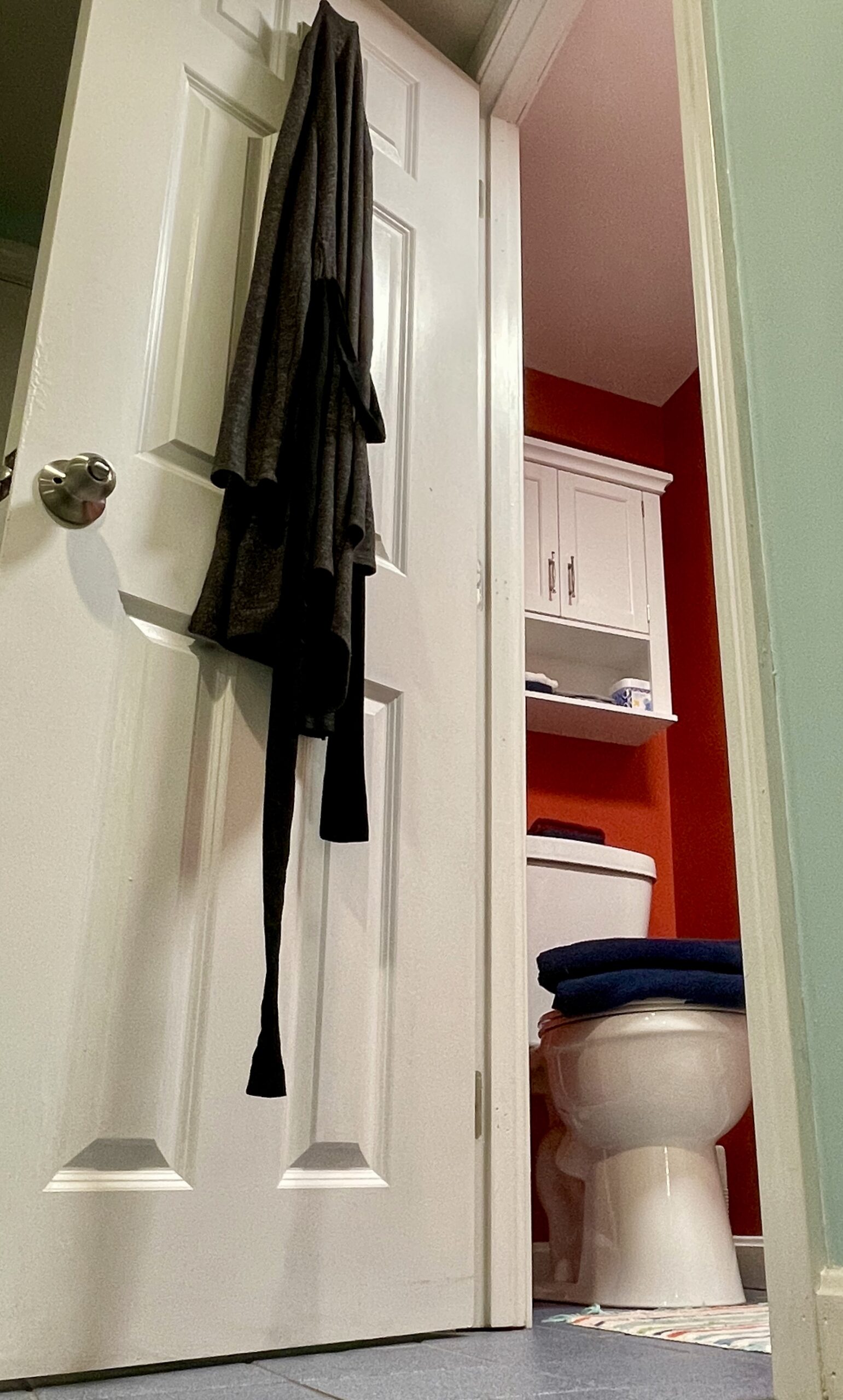As Dementia progresses, the bathroom can become a place of anxiety and be one of the most dangerous rooms in the home. The bathroom can be a place that leads to agitation, especially in later stages of the disease. Receiving assistance for personal care, like showers and dressing, can be difficult for your loved ones. The goal is to maintain their dignity and safety when providing the appropriate level of assistance. During advanced stages of the disease, your loved one will will need physical assistance in the bathroom. If you have reached out for assistance from a home health service, the health aide will have experience with Dementia care, but you should always feel empowered to advocate for your loved one. If your loved one has progressed to a point where they are not longer speaking, or speak very little, that is not an excuse to not speak to your loved one or for anyone providing care not to speak to them. Small basic gestures can make a huge difference. Make eye contact, keep a pleasant even tone of voice, and tell the person everything you are doing step by step. Tone of voice is important. The last part of the brain affected by Dementia is the amygdala. This is the part of the brain that handles emotion and reactions. The individual receiving the personal care will be able to tell if they are being rushed or if the person providing assistance is annoyed. When they sense that you are upset, they will become upset. Eye contact and providing constant updates helps keep the person receiving the care calm and feeling safe. Imagine that you are brought into a room by someone you don’t know, for example hired home help. Or by someone who you used to care for, a family member. You are then stripped of your clothing, left naked and put in a shower with no explanation. Caretakers can be very quick to complete what they see as a task, to get the person clean. The person receiving the care should always be the priority and basic human decency should not be skipped because it is assumed that the person may not understand what is happening.
When bringing professional assistance into your home to provide care, you need to think about your loved one and how they spent their lives. For example, you are looking for help for your father and the agency sends a female health aide to provide care. How comfortable will your father be with a woman changing and showering him? Especially if his wife is in the other room. Advocate for your family. If a female aide will make him uncomfortable you need to work with the agency to find assistance that your loved one is comfortable with. Undressing in front of a stranger or another family member can be embarrassing. The fear around having your clothes removed can lead to agitation. If you notice your loved one trying to cover themselves up or become upset when undressing try using a bathrobe. As their clothes are removed immediately put on a light bathrobe. The person should be allowed into the shower with the robe on. Begin with washing around it, start with their hair or legs. As the robe gets wet and starts to stick to their skin, instinct will tell them to take it off. Once they start to remove it you can assist them with taking it off and continue the shower. Giving the person a face cloth can provide them with the feeling that they are helping and they will cover their eyes with it if water drip down their face. Giving them something to hold with also help occupy their possibly anxious hands.
In later posts I will talk more about Durable Medical Equipment, DME, but for now we can talk about some bathroom safety. I had an advanced Dementia patient who was showered at the facility. We have a large bathroom with a walk in shower with very grab bar and shower chair you can imagine. The patient had trouble transitioning from the tile floor to the shower and onto the shower bench. There was no step up into the shower but she still struggled. Depth perception worsens over time with Dementia patients. My patient was not able to see the difference between the white tiles, the white shower, and the white bench attached to the white wall. She would become anxious and freeze up. She was not able to visually see the bench or shower well enough and felt she was going to fall. An all white room was too difficult to navigate. To fix this we would put a colored towel on the floor as a bridge between the tiles and the shower and place a colored towel on the bench so she would know where to sit. Adding color provided her with better visualization and she felt safer. Color contrast with help your loved one visually and provide more comfort as you are asking them to sit. If they can see the seat they will be more likely to sit down. If it appears like there is nothing but big white open space, they will resist to protect themselves.
Accepting personal care can be a very difficult step for your loved one. Add service in slowly if they are resistant to assistance. Maybe start twice a week for showers and slowly increase from there. Always remember the importance of dignity and safety. These are adults who have been independent for years, not children. Treat them as adults, talk to them, and create a positive environment that does not rush the individual. It can be difficult for the loved one who is now a caretaker to provide personal care. It’s ok to not feel comfortable showering your parents. There are home care programs that help with providing services in the home. Caregiver burden takes it’s toll on family caretakers and it’s ok to need help.

